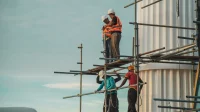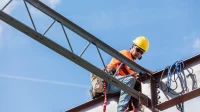Soolking.shop – Commercial Builders Risk Insurance – Construction risk insurance and construction progress insurance are exactly the same policies, just with different names. They are property policies that protect structures during construction and renovation projects.
The rates below do not include wind insurance for buildings within 50 miles of the coast. If your property is within 50 miles of the coast, send it and we will email you the correct prices.
Commercial Builders Risk Insurance
Insurance costs vary from 1 to 4% of the total construction cost. However, premiums are highly dependent on the required coverage and policy exclusions.
Insurance Gurus — Builders Risk Insurance
Therefore, finding a stable insurance company is essential as it will speed up the claims reporting process and help the insured settle these claims during construction.
Coverage required for a new construction project may include coverage for site preparation, excavation, foundations, piping, and temporary structures (such as scaffolding).
Many building risk policies provide cash value coverage for existing buildings; replacement cost coverage can increase your insurance costs.
Materials such as fixtures, tools and equipment may be covered by the builder’s insurance policy. The materials used in a project can directly affect the total cost of your policy. For example, the costs of your insurance policy will likely increase if the contractor used high quality building materials and custom installations.
Builder’s Risk Insurance — Blue Rock Insurance Services
Additional coverage for construction risk/progress insurance can protect materials that are still in transit, meaning they have not yet arrived at the project site, or materials that are stored off-site. This additional cover is vital if an accident occurs outside the workplace; for example, a fire breaks out in your warehouse or a truck transporting your materials crashes. This additional coverage will also affect the determination of the total insurance cost.
The average cost of builder’s risk insurance varies widely by project. Rates will vary depending on the type and size of your project, such as whether the building is being built or remodeled, or whether it is residential or commercial.
Builder’s risk insurance for homeowners requires different coverage limits and therefore different rates than commercial contracts. Additionally, construction risk insurance for homeowners may have specific coverage exclusions that are required for home construction insurance but not for commercial construction insurance. For this reason, it is imperative that you ask your insurance company to discuss the differences with you before signing any contract.




